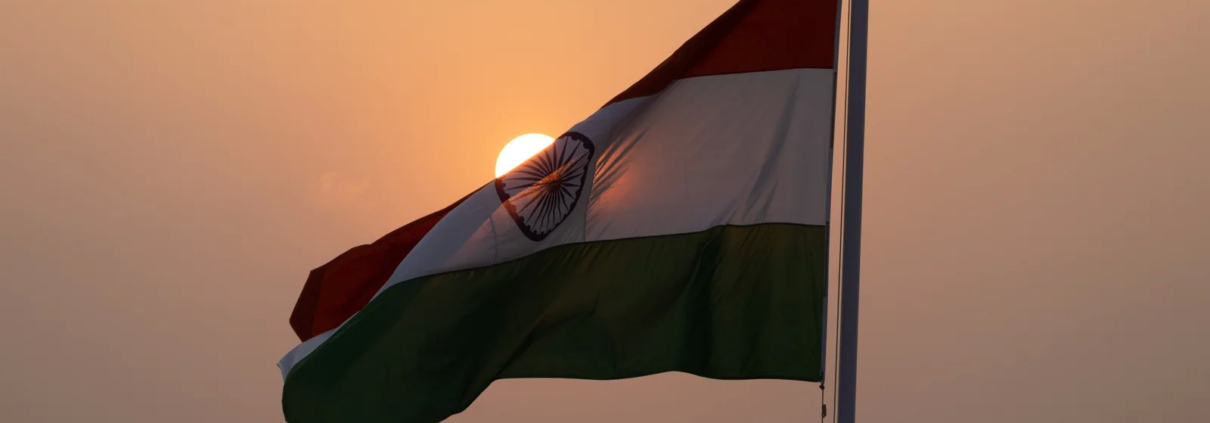[ad_1]
India is the land of the Vedas. This is the place where Astrology originated and developed. Indians have long relied on astrology as part of their daily lives, whether for agricultural purposes, social celebrations, or the start of a new venture. On the occasion of India’s 75th Independence Day, here are some little-known trivia regarding the practise of astrology.
One –India got Independence in an auspicious muhurata
The timing of India’s independence was greatly influenced by astrology. Hardeoji and Suryanarain Vyas of Ujjain informed Babu Rajendra Prasad, who would go on to become India’s first President, that the day was unlucky astrologically when the English authorities decided to grant India independence on August 15, 1947. When they learned that the English kings would only let them to choose any hour on that day, Hardeo insisted that it be midnight.
Astrological factors were taken into account when deciding on the date and time of India’s Independence Day, which was set for August 15, 1947, at 12:01 AM. The Moon was in the extremely favourable Pushya Nakshatra at this time. Among all nakshatras, Pushya is regarded as the king. At midnight, Abhijeet Muhurta, which is an excellent moment to start any big endeavour, was in effect. At that time, the fixed sign of Taurus ascendant—which symbolises a strong foundation for the nation—was rising.
Two – Most Indian Prime Ministers belonged to Watery zodiac signs
Till now, India has a seen a total of 15 Prime Ministers so far (not taking into account their re-election), most of whom belong to zodiac signs which have strong watery element. Of these, four Prime Ministers – Gulzari Lal Nanda, VP Singh, Chandra Shekhar and PV Narasimha Rao – belonged to Cancer zodiac sign. Another two, Jawaharlal Nehru and Indira Gandhi, belonged to Scorpio and Morarji Desai was a Piscean.
Three – Famous Lal Kitab was compiled in British India during 2nd World War
Pandit Roop Chand, a revenue official in Punjab of British India, authored the presently available version of Lal Kitab from 1939 to 1952. By profession, he worked as an Accounts officer in Defense department of British India and retired in 1954. Lal Kitab is unique in field of vedic astrology because for the first time a book explained how certain planetary positions in one’s horoscope should also reflect in the lines of his palm. In other word the book is on Astro-palmistry, that is, it has mixed the two different arts of Palmistry and Jyotisha. The Lal Kitab volumes were also given a red binding because these books contain the ledger book of one’s life. In fact, Lal Kitab mandates in very clear terms, that any book dealing with this system must be bound in non-shining, red colour.
Four- India’s National Calendar is Luni-Solar
The Hindu calendar is known as a lunisolar calendar. The 12 months move according to the moon and the year is 354 days long. However, every third year, 33 days are added by creating one extra lunar month of 29 days. The remaining four days are adjusted here and there. There are two main calendars in common use in India today, the Vikram Samvat with a zero point of 57 BC and the Shaka Samvat with a zero point of 78 AD. They are used for calculating the dates of all Hindu festivals like Diwali and Holi. The national calendar based on the Saka Era, with Chaitra as its first month and a normal year of 365 days was adopted from 22 March 1957 along with the Gregorian calendar.
Five – Astrology and National Flag of India
The national flag of India features saffron colour at the top. It is the colour of Mars and the element of fire pre-dominates in this. The colours saffron and Mars, as well as the fire element, depict power, courage, and glory. Saffron and tones of yellow are also quite similar, hence it reflects Jupiter’s exceptional spirituality, intelligence, compassion, and generosity.
Mercury’s favourite colour is green. The colour combination of green and Mercury represents steadfast thoughts, intelligence, reason, and expression. White colour is controlled by the Moon. Moon is also associated with mother, and for us, India is the motherland. The Moon is also in charge of the intellect and emotions. Together, the Moon and the colour white convey the characteristics of a deeply ingrained culture and tradition.
—————————-
Neeraj Dhankher
(Vedic Astrologer, Founder – Astro Zindagi)
Email: info@astrozindagi.in, neeraj@astrozindagi.in
Url: www.astrozindagi.in
Contact: Noida: +919910094779
[ad_2]
Courtesy










Leave a Reply
Want to join the discussion?Feel free to contribute!